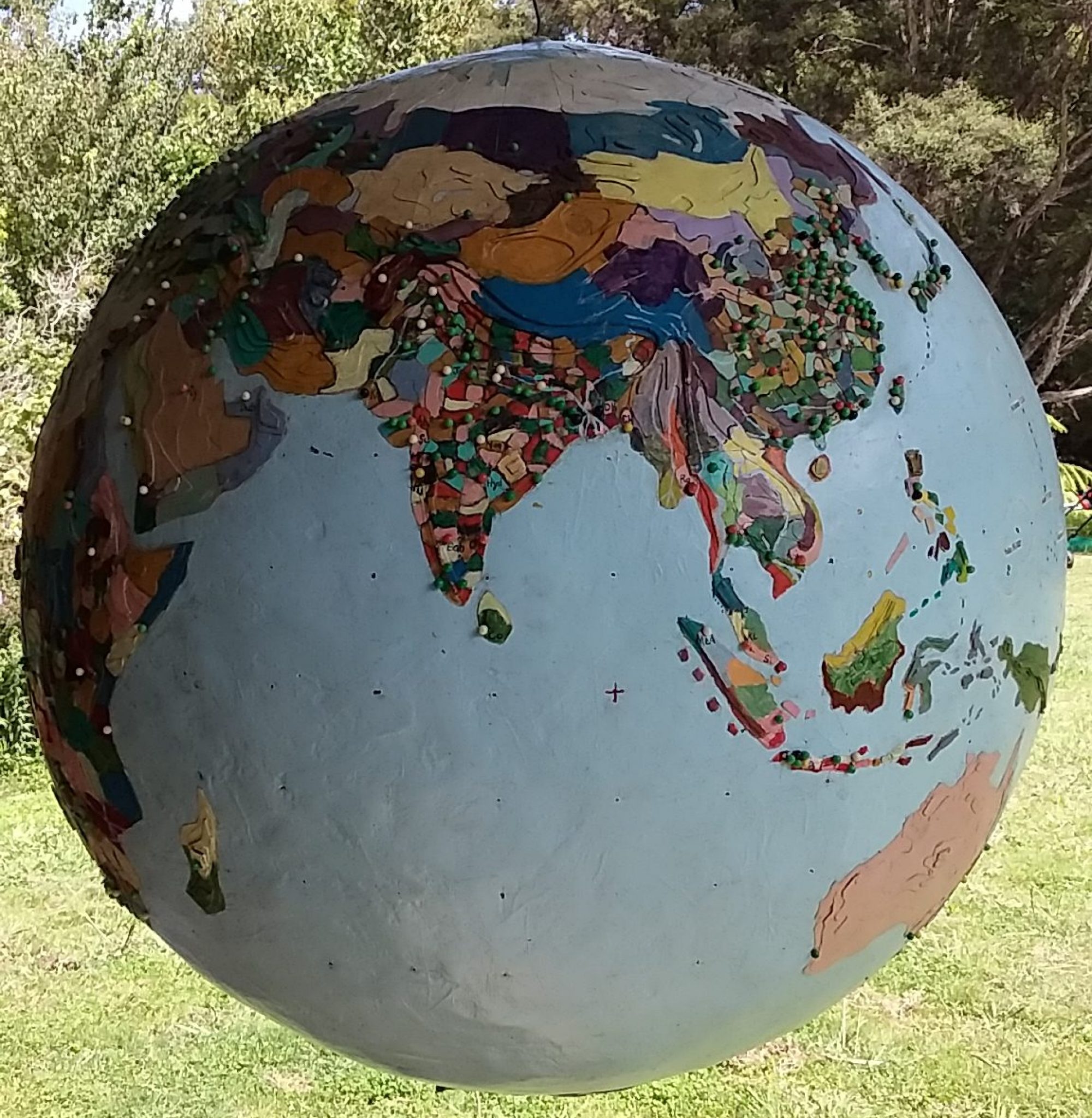North Wind
“That’s a millisphere!” I thought when I heard Le Vent du Nord, on stage at Womad, say the Canadian province of Quebec has eight million inhabitants. I include Quebec with the “Atlantic Canada” provinces (total population 2.3 million) in a millisphere I call North Wind (Eastern Canada).
It gets seriously cold there; last Christmas Eve, during near record low temperatures, a US Navy warship, commissioned in Buffalo New York only a week earlier, got stuck in ice in the Saint Lawrence, on its way to Florida – and stayed there for a month.
Le Vent du Nord are a progressive folk ensemble playing (and singing) French Canadian folk songs with fiddles, guitar, hurdy-gurdy, accordion and bouzouki – they sounded Cajun.
From the stage they acknowledged the welcome the performers had received from the Taranaki iwi and said there were some things that should be done for their indigenous peoples. Quebec is an Algonquian word for “where the river narrows”, the river being the Saint Lawrence. Other tribes are the Iroquois and Mohawk in the south and Inuit in the north but there is inter-reservation migration and the traditional “Indians” are a small minority, living in caravans and sheds on small reservations.
The majority tribe are the French Canadians, the French speaking residents of Quebec, who all relate back to 10,000 Catholic French settlers who came in the early 1600s. At first there was a serious imbalance of men to women so squaws were taken for wives and their bloodlines can be seen on the faces of the modern Quebecois.
The minority tribe in Quebec are the British, who took the French colony by conquest in 1763, and independence for the French speaking province has been an ongoing issue ever since. When the Parti Quebecois gained control of the provincial government the French language was granted more status although independence referenda held in 1980 and 1995 where both voted down, the last by a narrow margin.
The House of Commons of Canada passed a symbolic motion recognising Quebecois as a nation within a United Canada but Quebec closely watches Brexit, Scotland and Catalonia. These days they call it the “neverendum,” a debate that continues indefinitely and remains unresolved.
As part of doing a millisphere column I like to talk with people who have been there and I interviewed a St Johns Hill couple who grew up in Montreal, the world’s second largest french speaking city, in the 1950s and 60s.
Most of the people of Quebec live in the south, by the St Laurence, and most of them live in Montreal (metro population 4 million) which is an ancient city, in North American terms, and, like New Orleans, had a unique French/cultured European/cosmopolitan flavour. Montreal is a university town, has a thriving arts and design scene and has Canada’s biggest Jewish population.
.
Montreal was also a city divided by the Saint Lawrence boulevard, the east side was French and for an English schoolgirl in an enclave in west there was no reason to go there. To the north there were the Laurentian Mountains cultivated as a playground for Montreal and then there was a vast wilderness. Including all its rivers, lakes and dams Quebec is 12 percent freshwater and has 3 percent of the world’s renewable fresh water.
In the 1950s and 60s Indians were relegated to history but in 2010 a party of Quebec Iroquois, which means “they who smoke”, travelled to the World Lacrosse Championships in the United Kingdom on their own passports; Hillary Clinton interceded to allow their passage through the United States but the British government refused to recognise the Iroquois passports.
The independence issue had created uncertainty and consequently the wealthy moved their money to Ontario (Ottawa and Toronto) leaving Montreal a bit of a backwater, escaping urban renewal
In Quebec City, which is even more of a backwater, a young French Canadian man is standing trial for murder (shooting up a mosque). Immigration and emigration are both issues in the current provincial election campaign namely; Syrian and other Islamic immigrants coming in and young, rural and Anglo (English speaking) emigrants leaving.
